Picture this: You’re standing at the pharmacy counter with a prescription for an inhaler. You hand it over, half expecting a simple transaction, but the price they quote nearly knocks the wind out of you. How can something so critical for breathing cost this much? Then someone points out that there’s a cheaper generic version, but suddenly, you’re lost in a maze of names, insurance codes, and mystery markups. Is the saving real? Are you trading off quality or just shedding the brand’s fancy logo for a generic sticker? If you’ve ever felt like inhalers are more expensive than they should be—or wondered why your insurance covers one and not another—you’re not even a little bit alone.
Breaking Down Generic vs. Brand-Name Inhaler Prices
Let’s get real: The sticker shock with inhalers is no accident. You might expect that generic inhalers would cost just a few bucks, but even those can set you back far more than most common prescriptions. Why? It comes down to how inhalers are actually made, the patent games played by pharmaceutical companies, and a messy supply chain that rewards complexity.
Brand-name inhalers (think Advair, Symbicort, Ventolin) are usually the first of their kind, launched with exclusive patents that block any copycats. For the years that those patents last, these inhalers can charge whatever the market will tolerate. A 2023 study published in Health Affairs reported that some of the big-name inhalers are still bringing in more than $300 per device—even after decades on the shelf. That’s wild, especially given that the actual cost to make the device and the active ingredient inside is likely a tiny fraction of the price.
Now, generics are supposed to swoop in and save us all money. But here’s where things get weird. Inhalers aren’t just pills — they’re complex devices. Recreating an exact duplicate isn’t easy. Instead, generic makers must get FDA approval for a “therapeutic equivalent” — meaning the device works just as well as the brand for most people. Some generics have been slower to hit the shelves because of legal battles or tricky manufacturing standards. When they do show up, competition drives prices down—but usually not as much as you’d expect. For example, in 2024, a typical generic albuterol inhaler sold for around $50-$60 out of pocket, compared to the brand-name’s $75-$85. And if you don’t have insurance? You might see even higher figures in certain pharmacies.
But here’s a fun fact: The FDA tracks all generic drug approvals, and as of early 2025, there are now at least five FDA-approved generic albuterol inhalers. With more players comes lower prices, though savings can be a slow burn. Some pharmacy chains mark up differently, and coupon cards or club memberships make things even trickier. One CVS in Chicago sold a generic for $58, while a Walmart just blocks away listed it at $37 with a membership card. It pays—literally—to shop around.
To put this in perspective, check out this price comparison:
| Inhaler Type | Brand Name (Avg Price, USD) | Generic Equivalent (Avg Price, USD) |
|---|---|---|
| Albuterol HFA | ProAir, Ventolin ($75 - $85) | Generic Albuterol HFA ($50 - $60) |
| Salmeterol/Fluticasone | Advair ($350 - $400) | Wixela Inhub ($200 - $270) |
| Budesonide/Formoterol | Symbicort ($350 - $410) | Generic Symbicort ($300 - $370) |
Notice the drop from brand to generic, but also how the prices don’t crash all the way down. This isn’t insulin, which can plummet to 90% off. Especially for combo inhalers—like Advair and Symbicort—the cost difference can touch hundreds, but it’s rarely night and day.
And get this: The introduction of the first generic for a popular inhaler didn’t drop prices overnight. Drug plans and pharmacies kept some brands higher, while insurance preferred the legacy name they’d already cut a deal on. The playing field is not level, and just because a generic’s out doesn’t mean you’ll see it automatically or pay less. The high prices aren’t driven down unless more generics join in, and even then, it may take over a year to see big changes at the register.
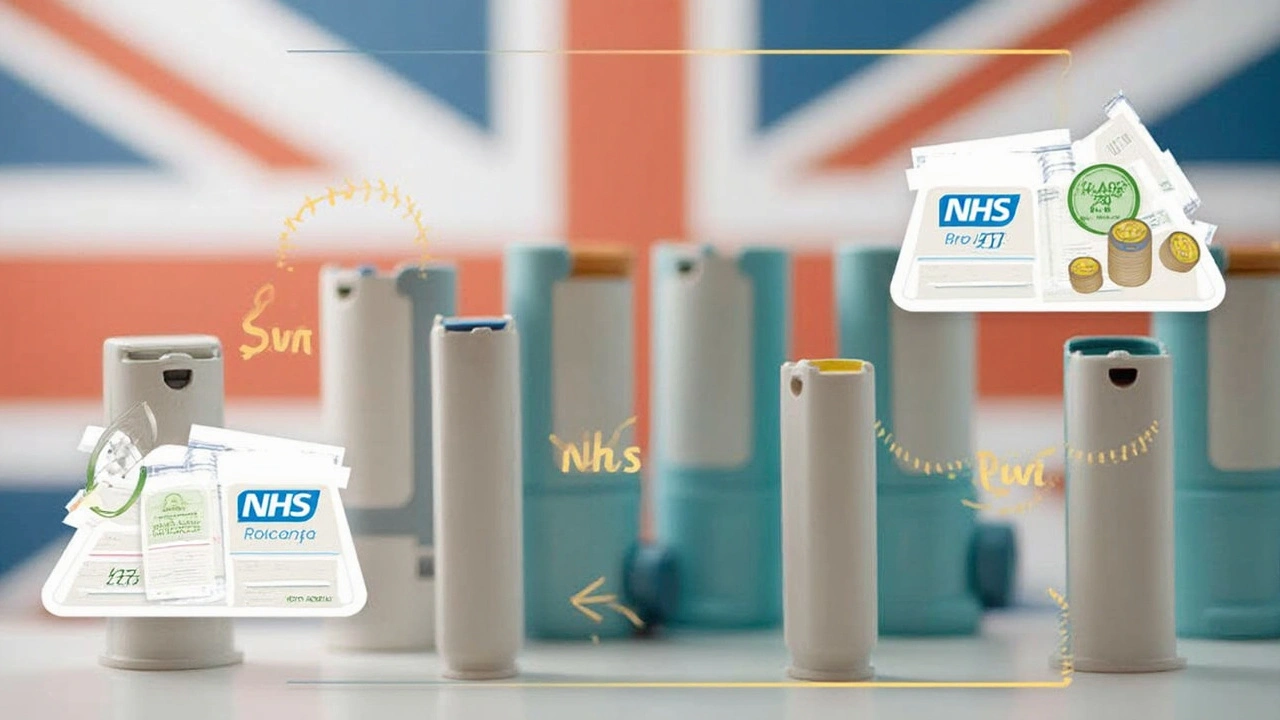
How Insurance Coverage Complicates the Real Price
Let’s talk about everyone’s least favorite word: insurance. You probably hear folks complain that their insurance barely covers anything, or it only covers the weirdest possible inhaler. Crazy, right? Insurance plays the biggest role in the cost you pay, and it’s not always logical.
Every insurance plan has something called a formulary—a secret list of preferred drugs. If your inhaler is on that list, you’ll just pay your copay or coinsurance (maybe $10-$50 for generics, $30-$100+ for brands). But if it isn’t, watch out; you could owe the full price, even if there’s a perfectly good generic sitting right there.
And here’s the kicker: Insurance plans often make their own deals with drug companies. For example, in 2024, several big insurers signed “preferred status” deals with brand-name manufacturers. Sometimes, they even make the brand-name inhaler cheaper for you than the generic. Friends of mine have shown me receipts: a $35 copay for Flovent Diskus (brand) but $62 for the generic. No, you’re not imagining it—brand deals really can undercut generics.
Some companies (especially the big pharmacy benefit managers—the organizations behind the scenes) encourage these deals using rebates. The drug company pays a behind-the-scenes rebate or kickback to the insurer for every brand inhaler dispensed, as long as the insurance company steers their users to that inhaler. Sometimes, that rebate never reaches the patient at all; it’s just profit padding for the insurer or pharmacy benefit manager.
High-deductible plans are another beast. If you haven’t met your deductible yet, you’ll pay the full sticker price—sometimes hundreds—regardless of whether it’s a generic or a brand. A 2022 analysis from Consumer Reports found many people threw up their hands, skipped the inhaler, or rationed every puff to save money. And don’t get me started on Medicaid and Medicare plans; they run their own lists, and access to cheaper options can actually be better through those than with some high-end commercial plans.
It gets even weirder. State and federal programs can occasionally override what pharmacies charge, and you might qualify for extra help if you meet income guidelines. Some states now cap out-of-pocket spending on certain inhalers, but enforcement is spotty; you need to watch for news from your state pharmacy board or advocacy groups.
If you get a prescription for an inhaler that isn’t covered—but the generic is—you can ask your doctor to write “dispense as generic” or “DAW (dispense as written)” on your paperwork. Sometimes, just tweaking the script gets you big savings. And don’t forget coupons (from manufacturers or discount card programs); those have saved people hundreds in a single year. Try plugging “inhaler coupon” or the specific name of your device into Google, and see what pops up before you pay the pharmacy.
- Check first if your insurance prefers a particular inhaler. Most customer service reps will look this up over the phone—for real, it’s worth a call if you’re about to drop $300.
- Ask your pharmacy to quote you the cash price with and without insurance. Sometimes—especially with discount programs or coupons—you’ll find the cash price is less than your copay.
- Switching to an alternate FDA-approved inhaler can save money, especially if your insurance pushes you there anyway. If albuterol is the goal, consider reading this thorough guide on Albuterol alternatives for more options and price breakdowns.
But don’t get tricked into switching inhalers just because of price, unless your doctor gives it the green light. Inhaler recipes matter—using one slightly different molecule might not deliver the same results for everybody. Double check with your prescriber.
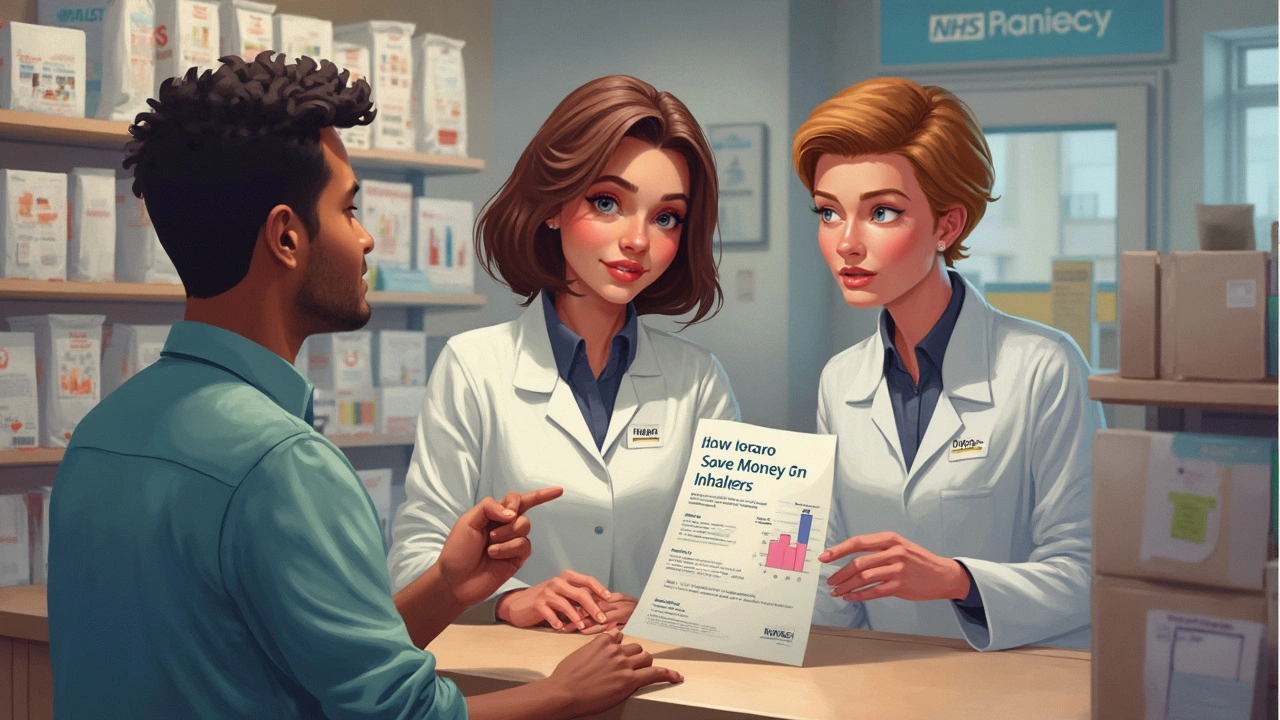
Smart Tips and Surprising Workarounds for Saving on Inhalers
If you’ve wrestled with sticker shock before, you already know the pharmacy doesn’t exactly hand you a playbook for saving money. The rules keep shifting, and what works for your neighbor may not cut your cost. Let’s lay out some strategies that actually get results—and clear up some of the myths that waste people’s time.
First, always ask your doctor if you can try a generic first, or switch to a less expensive brand. Most prescribers are happy to help you experiment—especially since insurance companies love generics. If the generic gives you similar control, you’ll pocket the difference every month. Plus, if you get side effects from one inhaler, you might avoid them with a device that has a different delivery mechanism (like a disk vs. a spray), even if the medicine inside is basically identical.
Shopping around might save you more than using insurance in some cases. Websites like GoodRx and Blink Health often quote prices less than half what you’d pay with your insurance card. One real case: A New York dad saved $210 last summer by switching his son’s prescription to a generic at a pharmacy across town using a coupon found online.
Don’t forget about manufacturer coupons. Even big brands like Symbicort, Breo, and Advair run $0 or $35 copay cards for adults with commercial insurance. No, you can’t use these with Medicare or Medicaid (it’s against the rules), but for anyone else, it’s a game-changer. You can often apply online and bring a printed coupon or code straight to your pharmacy.
Keep your eyes open for new generics and alternatives. Check in with your pharmacist every few months; new generics get approved every year, and they don’t always show up on insurance lists right away. For example, in 2023 and 2024, Wixela Inhub (the first generic Advair Diskus) and the generic Symbicort both launched, dropping prices noticeably.
- Ask if your insurance offers mail-order pharmacy options; they sometimes deliver three-month supplies for the price of two co-pays, and have access to special negotiated prices on generics.
- Use patient assistance programs or state low-income subsidies, especially if you’re uninsured or under-insured. Most major manufacturers have a patient help line and online forms—worth a few minutes if you’re facing a huge bill.
- Don’t throw away old inhalers the second they expire. The FDA says most inhalers are stable for several months past their printed date if kept at room temperature and unopened. Don’t risk your health, but don’t panic about a month-old device either.
- Some clinics run bulk-purchasing programs—ask if there’s a community health center nearby that pools resources for better pricing on inhalers.
Some folks even refill inhalers while traveling. In Canada, the same albuterol inhaler that costs $75 in the U.S. might be $15 at a walk-in pharmacy—legally, if you bring your prescription. If you live near a border, it can make sense for long-term savings, though you’ll want to check regulations on bringing medicines across state lines.
Asthma and COPD don’t play by the rules—and neither do drug prices. The more you learn the ins and outs of this system, the more you can challenge what you’re asked to pay. Sure, it shouldn’t be this complicated. But at least now you’ve got the facts and some real talk about how to keep those lungs happy—and your wallet intact.

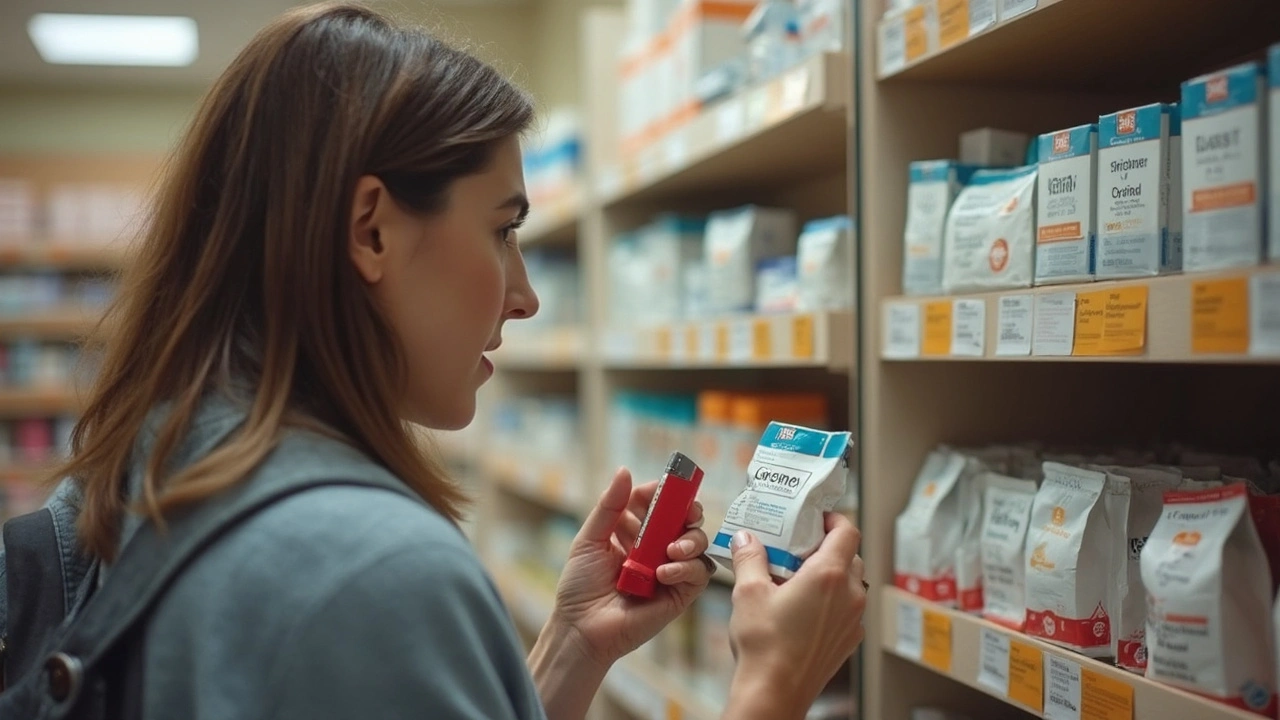

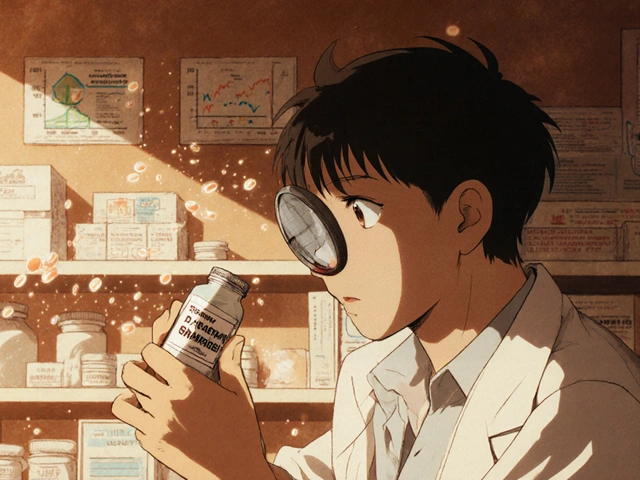
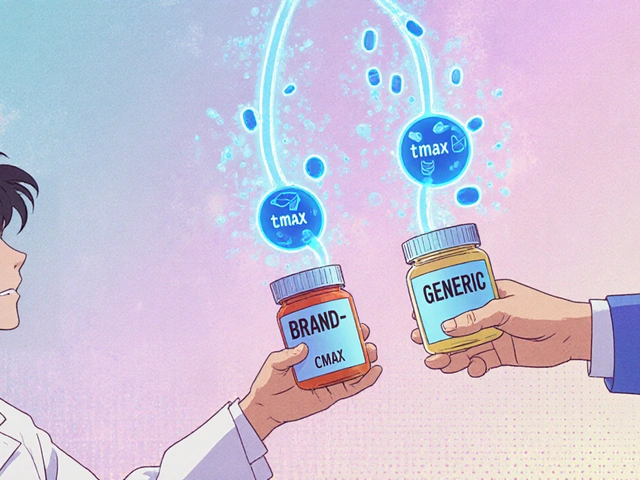



I just paid $62 for my generic albuterol last week. 😩 Then I found a coupon on GoodRx and got it for $28 the next time. Why does this have to be so hard??
In India, we don’t even have these brand inhalers. We get generics for under $5. But here’s the thing - even if the price is low, access is still a nightmare in rural areas. No pharmacy nearby, no docs who know how to prescribe right. Money ain’t the only problem. 🙏
Look, I get that the system is broken, but let’s not pretend generics are magic. My kid had a bad reaction to one generic albuterol - the puff didn’t hit right, the propellant felt off. We switched back to Ventolin and he breathed easy again. The FDA says they’re equivalent, but bodies aren’t lab rats. Sometimes the brand feels better because it’s been tested on real people for decades. Don’t just chase the lowest price - chase what works for YOU. And yes, I’ve used GoodRx, coupons, even mail-order. But I also called my doc and said, ‘This one doesn’t feel right.’ And guess what? She listened.
As someone who’s lived in three countries, I can say this: the U.S. is the only place where a life-saving inhaler costs more than a decent pair of sneakers. In Canada, same drug, $15. In Germany, covered 90% by public insurance. Here? You need a PhD in pharmacy benefits just to buy a puff. And don’t get me started on how PBMs are the real villains here - they’re not even in the room when you’re gasping for air.
Oh wow. A 200-page essay on why inhalers are expensive. Did you also include a flowchart on how to file a complaint with the FTC? Or maybe a 12-step program for not crying at the pharmacy counter? 🙄 The real answer: Big Pharma + insurance middlemen = you paying $80 for a plastic tube with chemicals. Congrats, you’ve uncovered the secret: capitalism is rigged. News at 11.
The structural inefficiencies in pharmaceutical distribution are not merely economic anomalies-they are systemic failures of regulatory capture, wherein patent extensions and formulary gatekeeping function as quasi-legal monopolistic mechanisms. The FDA’s therapeutic equivalence designation, while ostensibly rigorous, fails to account for aerosol dispersion dynamics, patient inhalation technique variance, and device-specific bioavailability profiles. Consequently, the perceived cost differential between branded and generic inhalers obscures a deeper truth: the commodification of respiratory health is predicated on institutionalized obfuscation. One must ask: if the active pharmaceutical ingredient is identical, why does the delivery mechanism command such a premium? The answer lies not in pharmacology, but in rent-seeking behavior.
I used to skip doses because I couldn’t afford it. Then I found a local clinic that gave out free samples. Not a joke. They had a shelf of old stock from pharma reps. I’ve been using the same inhaler for 8 months now. It’s expired on paper, but it still works. I’m not proud of it, but I’m alive. Please, if you can, help someone who can’t afford this.
It’s not just the inhalers. It’s the entire architecture of care. We’ve turned breathing into a transaction. We’ve turned survival into a puzzle of coupons, formularies, and pharmacy loyalty programs. And the worst part? We’ve normalized it. We shrug and say, ‘Well, that’s just how it is.’ But it’s not. It’s a moral failure. Every time someone chooses between food and a puff, we’re all complicit. We’re not just paying for drugs-we’re paying for a society that forgot how to care.
I can’t believe people still fall for the ‘generic is just as good’ lie. My cousin’s asthma got worse after switching. She ended up in the ER. Brand-name isn’t just marketing-it’s reliability. If you’re risking your lungs to save $20, you’re not being smart. You’re being reckless. And if your insurance pushes you to the cheaper one? Fire them. Your life isn’t a spreadsheet.